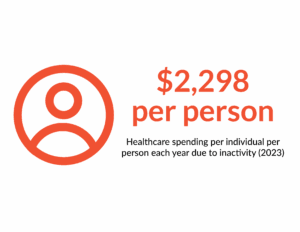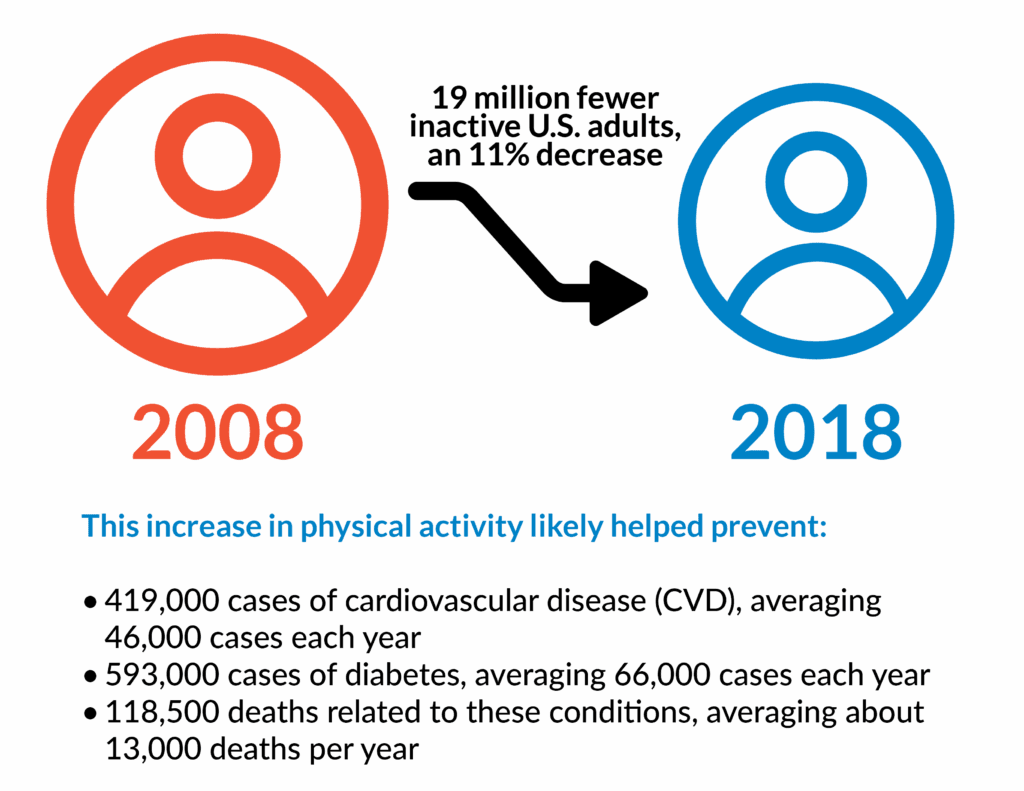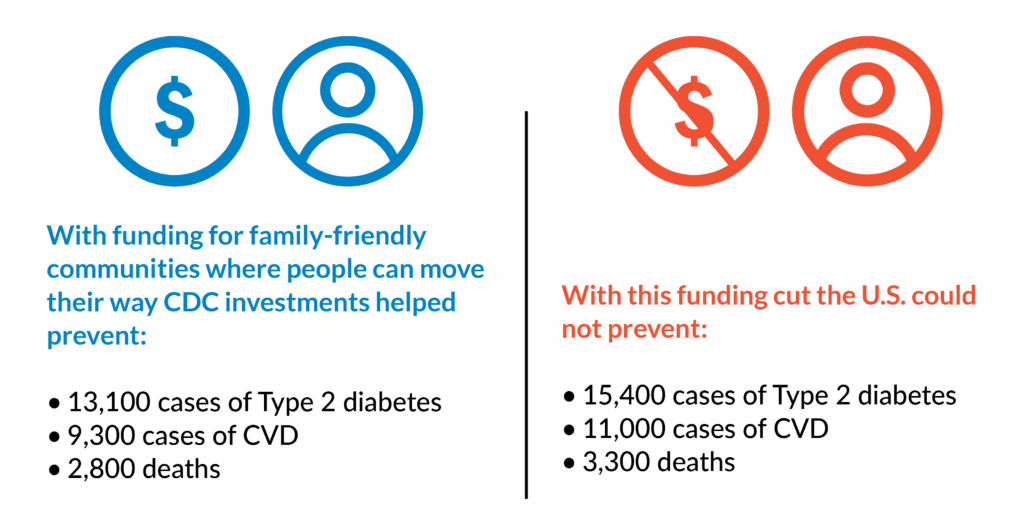
News
By Heidi Simon, April 2, 2025
There can, and should, be a joy to transportation. Feeling of sun on your face as you walk, hearing the laughter of kids riding their bikes to school, having the time to enjoy a good read on the bus. Every community should be a place where families can incorporate walking, biking, and transit into their routines to experience the joy of these everyday moments. It is admittedly difficult to demonstrate the quantifiable safety and health benefits that come when you invest in active transportation. However, there are numerous, measurable benefits that directly improve the lives of individuals.

We know that when our communities are designed in a way that makes active transportation unsafe, inaccessible, or inconvenient, it is harder for individuals to meet the recommended daily physical activity levels. Introducing walking, biking, and taking transit into daily routines can be an easy and powerful remedy to some of this country’s most pressing concerns. For example, it can increase academic performance among children, decrease weight gain among adults, and prevent high rates of chronic disease and cognitive decline among older adults. It can also begin to address the $218 billion annual healthcare costs linked to physical inactivity.
Investment by the federal government in initiatives like CDC’s Active People, Healthy Nation, a national initiative to help 27 million Americans become more physically active by 2027, is one important way that these benefits are realized. This work addresses physical activity in the U.S. by promoting family-friendly communities where people can move their way. It supports communities and partners, including Smart Growth America, as they implement proven strategies such as Complete Streets. From 2018 to 2023, CDC invested $60 million in this and similar efforts, saving the U.S. healthcare system $585 million and preventing 2,800 deaths.
At Smart Growth America, these investments have advanced the adoption and implementation of Complete Streets in a variety of ways. We have hosted multiple years of our Champions Institute, bringing together 97 local and state elected officials to build capacity and create a peer network of those working hard to create change. 11 communities installed quick-build demonstrations addressing known barriers to active transportation and fostering partnerships for additional street design changes in the future. Some of our most popular resources, including Dangerous by Design, the Best Complete Streets Policies reports, our Active Roadmap for Rural Mobility, and last year’s Guide to Measuring Complete Streets Progress would still be sitting in draft form if not for support from federal investment to CDC. Every partner in Active People, Healthy Nation has a similar list of the ways that these dollars have led to key products, programs, and assistance for communities working to lessen the cost and burden of physical in activity.
The current administration has regularly stated joint priorities of strengthening the economy and American families. Investing in initiatives that support physical activity would see positive results in both while reducing funds would have a devastating impact. Cutting the budget for family-friendly communities where people can move their way by $80 million would result in an additional $690 million to the U.S. healthcare system over the next five years and 3,300 deaths. Smart Growth America will be closely watching to make sure that the administration’s actions support these priorities and be prepared to stand up for the joy, health, and strength of our communities.
Related News

© 2025 Smart Growth America. All rights reserved
Site By3Lane Marketing












